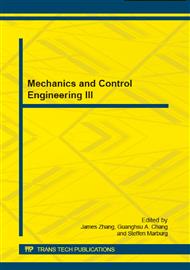p.211
p.215
p.219
p.227
p.233
p.239
p.244
p.248
p.252
Challenges of Data Acquisition and Analysis for Characteristics-Driven and Metrology-Based Optimization of Milling Process Development
Abstract:
The research and practical use of data and data-mining in production environment is still at an early stage. Although almost every manufacturing company collects a lot of process and product related data they often do neither use nor deploy this data in order to optimize or even analyze their production processes. The acquisition of process data brings several advantages. On the one hand the implicit knowledge is permanently stored and on the other hand it is possible to learn from previous process failures. The acquired knowledge could then be applied to all future production tasks. Although many research activities can be observed since the late 90s, none of them managed the transfer to practical usage. In order to encourage the practical transfer of data-mining in production environment this paper presents a metrology-based test set-up and therewith arising challenges when consistently acquiring and processing inhomogeneous process, product and machine data. For the experimental set-up, on-machine metrology systems were developed and integrated into a 5-axis milling machine to gain much significant data.
Info:
Periodical:
Pages:
233-238
Citation:
Online since:
December 2014
Authors:
Price:
Сopyright:
© 2015 Trans Tech Publications Ltd. All Rights Reserved
Share:
Citation:


